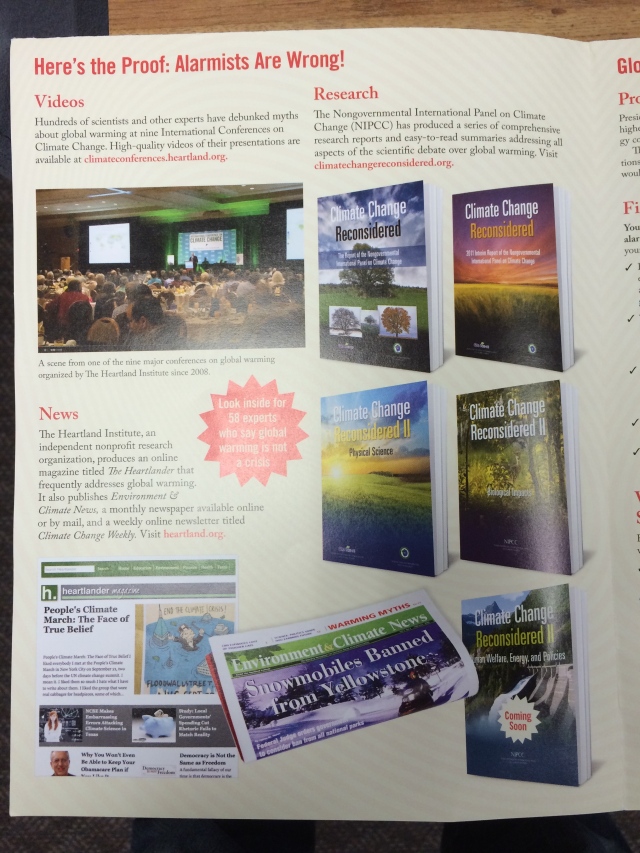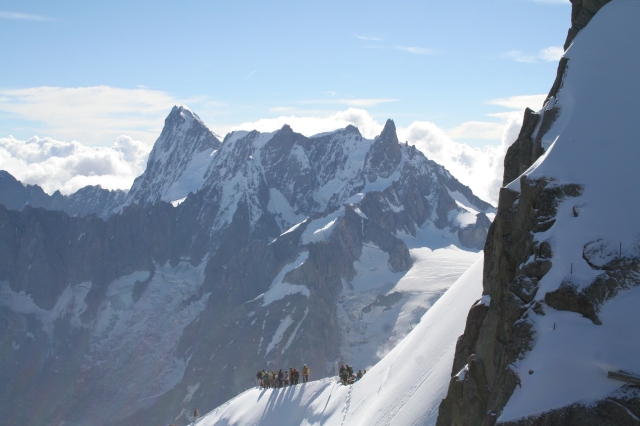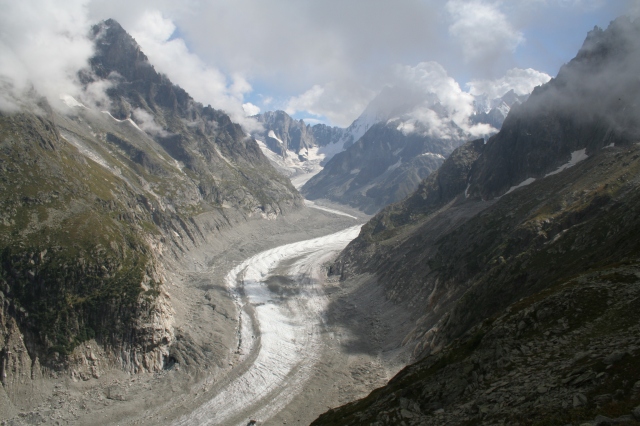I was always jealous of geoscientists who started their education in the 70’s; for them, there was only a 10 year backlog of plate tectonics relevant geoscience literature to catch up with. Even under sane circumstances it gets harder and harder every year to catch up on all of the relevant literature, but multiply the level of difficulty by the proliferation of academic journals and the ever increasing push to publish, and you can see the inherent problem for any student looking into a subject with more than a decade of science behind it. If you are lucky there are a a handful of key papers that some older student or generous advisor tells you to start with, but more often you spend most of your graduate career writing down references you are embarrassed not to have read.
From a (U-Th)/He perspective I hit things at the right time. The first modern He paper was Peter Zeitler’s 1987 paper U-Th-He dating of apatite: A potential thermochronometer published in Geochmica et Cosmochimica Acta (v. 51, no. 10, p. 2865–2868), and by my first day of graduate school in 1999 publication was modest enough that I could carry every single modern (U-Th)/He paper around in my backpack (which I did, a sort of penance for not having read and re-read them enough times).
Being near the beginning makes it easier to keep up, but it of course also allows one to develop a historical view of the development of a field. When you are reading papers as they come out, publication in 1999 and 2001 is a huge gulf, but when you are downloading PDF’s in 2014, you can often forget the relative order of the work and not entirely grasp the timeliness and importance of an individual contribution. There is also the critical viewpoint you get from attending meetings and seeing early versions of the studies, something that scanning abstracts cannot give you.
Anyways, my point is that when people start working in my group on He projects, they often begin at Outcrop #1 (I was taught that this was the library but I now assume it is google scholar). Probably the hardest thing about doing a M.Sc. is trying to read enough to know the field and have enough time to do your own work. So I am often asked about what papers you should read to get up to speed. Well, no list is perfect, but I thought why not put this up on the World’s Leading Thermochronology blog? Perhaps other techniques and subdisciplines will follow, but here it goes. My essential beginner (U-Th)/He reading list. Oh, and I am sticking to academic papers, but I’ll throw out quick references to my earlier post just for the über-beginner.
As a disclaimer, this list is obviously not exhaustive or complete. Nor is it a list of what I consider to be the best papers in the field, in fact some of the ones I consider to be the best do not appear below. What I am trying to compile is simply a primer, with minor annotations, in chronological order, of papers that seem to get referenced and discussed often. The might be milestones, or they might provide some important summary or lesson that most He chronologists take as assumed knowledge. I am also not providing PDF’s or links to PDF’s because I am not an idiot and refuse to fight Elsevier’s legal team. I am putting them in chronological order to help preserve some sense of the historical development of the technique, and please, if I forgot something, email me!
Zeitler, P.K., Herczeg, A.L., McDougall, I., and Honda, M., 1987, U-Th-He dating of apatite: A potential thermochronometer: Geochmica et Cosmochimica Acta, v. 51, no. 10, p. 2865–2868. The paper that started it all, a revisitation of a long-forgotten technique within the context of modern thermochronology and noble-gas diffusion.
Farley, K.A., Wolf, R., and Silver, L., 1996, The effects of long alpha-stopping distances on (U-Th)/He ages: Geochmica et Cosmochimica Acta, v. 60, no. 21, p. 4223–4229. One of the foundational papers that explains and provides a solution for alpha-particle ejection, one of the fundamental problems in He dating. The methods have been modified, but this paper sets the bar.
Wolf, R., Farley, K.A., and Silver, L., 1996, Helium diffusion and low-temperature thermochronometry of apatite: Geochmica et Cosmochimica Acta, v. 60, no. 21, p. 4231–4240. Wolf’s Ph.D. thesis laid much of the foundation for He dating, and this paper provides some of the first high-quality diffusion data for apatite.
House, M.A., Wernicke, B.P., and Farley, K.A., 1998, Dating topography of the Sierra Nevada, California, using apatite (U–Th)/He ages: Nature, v. 396, no. 6706, p. 66–69. He dating has the power to date processes that occur at very low temperatures, and this paper decided to swing for the fences and use He to address landscape evolution in a consistently contentious region.
Wolf, R., Farley, K.A., and Kass, D., 1998, Modeling of the temperature sensitivity of the apatite (U-Th)/He thermochronometer: Chemical Geology, v. 148, no. 1-2, p. 105–114. Like all thermochronometers, He dates are non-unique, and represent the integrated thermal history of a particular grain. This paper explains the fundamental math of this reality, and provides some very clear and straightforward examples of how this can cause practical issues.
House, M., Farley, K.A., and Kohn, B., 1999, An empirical test of helium diffusion in apatite: borehole data from the Otway basin, Australia: Earth and Planetary Science Letters, v. 170, no. 4, p. 463–474. Otway basin is a key natural calibration location for the apatite fission-track system, and this paper used the well-calibrated drill-hole to test if the laboratory diffusion studies made sense. Spoiler alert, they do.
House, M.A., Farley, K.A., and Stockli, D., 2000, Helium chronometry of apatite and titanite using Nd-YAG laser heating: Earth and Planetary Science Letters, v. 183, no. 3, p. 365–368. Early He dating was done with multiple grain aliquots in resistance furnace, this took a ton of time and required lots of material. This paper solves the laser heating problems and led to the modern age of regular single-grain dates.
Stockli, D., Farley, K.A., and Dumitru, T., 2000, Calibration of the apatite (U-Th)/He thermochronometer on an exhumed fault block, White Mountains, California: Geology, v. 28, no. 11, p. 983. If you’ve ever wondered what a perfect He data set looks like, here you go. I am convinced that this paper sold more He labs than anything else because it made the technique look easy and powerful. Figures from this paper are still amongst my favorites for demonstrating the technique, and I’ve found it to be a fantastic reading group paper for beginner thermochronologists. You can discuss and demonstrate many key aspects of He dating in a relatively short paper.
Farley, K.A., 2002, (U-Th)/He Dating: Techniques, Calibrations, and Applications: Reviews in Mineralogy and Geochemistry, v. 47, no. 1, p. 819–844, doi: 10.2138/rmg.2002.47.18. This review paper is superb, readable, relatively comprehensive, and exceedingly useful.
Meesters, A., and Dunai, T., 2002, Solving the production–diffusion equation for finite diffusion domains of various shapes Part I. Implications for low-temperature (U–Th)/He thermochronology: Chemical Geology, v. 186, no. 3-4, p. 333–344. Kind of a “deep cut” for people interested in diffusion, this paper helped teach me more about the mathematics of He diffusion than damn near anything.
Shuster, D.L., Ehlers, T., Rusmoren, M., and Farley, K.A., 2005, Rapid glacial erosion at 1.8 Ma revealed by 4He/3He thermochronometry: Science, v. 310, no. 5754, p. 1668. 4He/3He thermochronology is a powerful technique on its own, but it also helps address and investigate a variety of issues in “traditional” He dating. This paper provides a good introduction to the technique and helps show off its potential, and can serve as an amuse-bouche for the beefier (or tofu-ier for some of us) 4He/3He literature.
Fitzgerald, P.G., Baldwin, S.L., Webb, L., and O’Sullivan, P., 2006, Interpretation of (U–Th)/He single grain ages from slowly cooled crustal terranes: a case study from the Transantarctic Mountains of southern Victoria Land: Chemical Geology, v. 225, no. 1-2, p. 91–120. For years people collected He dates that they couldn’t interpret, filed them away, and pretended they never existed. Then this paper came out and allowed the community to air its dirty laundry, admit that there were things about He dating we didn’t understand, and provide a comprehensive list of reasons your data might look odd.
Reiners, P.W., Thomson, S.N., McPhillips, D., Donelick, R.A., and Roering, J.J., 2007, Wildfire thermochronology and the fate and transport of apatite in hillslope and fluvial environments: Journal of Geophysical Research: Planets (1991–2012), v. 112, no. F4, do: 10.1029/2007JF000759. This is one of my favorite papers of the last decade, and one that I am consistently bringing up in discussions. I think it gets overlooked a little too much, maybe because it appeared in an Earth Surface journal or because its lead phrase is about wildfires, but this paper demonstrates one of the most important facts relevant to detrital He dating, that apatite fractionates over the land surface. Let me repeat that, apatite fractionates over the land surface.
Flowers, R.M., Ketcham, R.A., Shuster, D.L., and Farley, K.A., 2009, Apatite (U–Th)/He thermochronometry using a radiation damage accumulation and annealing model: Geochmica et Cosmochimica Acta, v. 73, no. 8, p. 2347–2365, doi: 10.1016/j.gca.2009.01.015. The recognition that radiation damage is the single biggest control on He diffusivity has revolutionized He dating, and made it a much more powerful technique. This paper, and another that was published at roughly the same time by Shuster et al., provide the fundamental models and explanations we now use to understand out He data.
Flowers, R.M., and Farley, K.A., 2012, Apatite 4He/3He and (U-Th)/He Evidence for an Ancient Grand Canyon: Science, v. 338, no. 6114, p. 1616–1619, doi: 10.1126/science.1229390. I have to include the only He paper that has made the New York Times Front page and caused more gruffing and questionable responses than any other in recent memory. In addition, it is a fantastic example of combining “traditional” and 4He/3He dating to address an outstanding geologic problem.
Guenthner, W.R., Reiners, P.W., Ketcham, R.A., Nasdala, L., and Giester, G., 2013, Helium diffusion in natural zircon: Radiation damage, anisotropy, and the interpretation of zircon (U-Th)/He thermochronology: American Journal of Science, v. 313, no. 3, p. 145–198, doi: 10.2475/03.2013.01. Once it was realized that He diffusivity in apatite is controlled largely by radiation damage, it stood to reason that the same would be true for zircon. This paper provides a boatload of data and presents a testable and usable model that has been used to explain natural data sets, and is now incorporated into most thermal models.

























